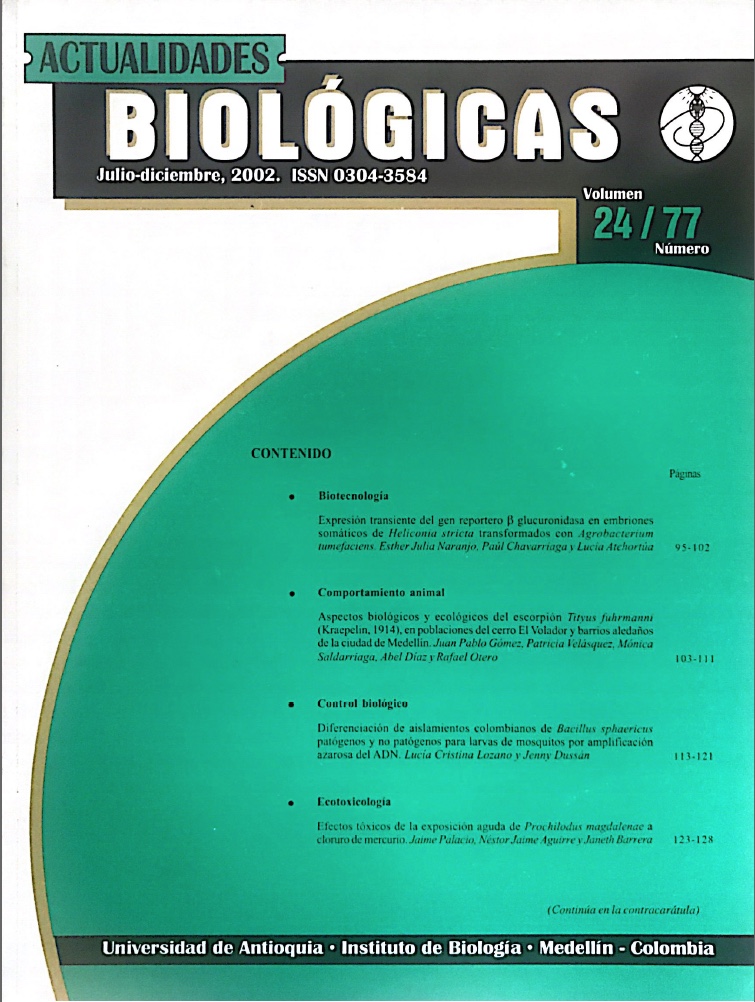Efecto de la transición A - G en la posición -21 del intrón 10 del gen NCF-2 la expresión de la proteína p67-phowx
DOI:
https://doi.org/10.17533/udea.acbi.329538Palavras-chave:
céluas fagocíticas, NADPH oxidasa, p67-phox, enfermedad granulomatosa crónica (EGC)Resumo
Las células fagocíticas (neutrófilos, eosinófilos monocitos y macrófagos) producen moléculas reactivas de oxígeno que tienen una importante acción microbicida. La generación de estas moléculas ocurre durante el fenómeno de explosión respiratoria, el cual depende de la activación de un sistema enzimático conocido como NADPH oxidasa. La importancia de este sistema se ha evidenciado gracias al estudio de la enfermedad granulomatosa crónica, pues en esta enfermedad se produce un trastorno de este complejo enzimático, lo cual altera los mecanismos microbicidas y conduce a la aparición de infecciones recurrentes. Este defecto es causado por una mutación en alguno de los genes que codifican para los componentes del sistema NADPH oxidasa. Además de estas mutaciones, se han descrito varios polimorfismos en dichos genes. Sin embargo, estos cambios nucleotídicos no se han asociado con mayor susceptibilidad a infecciones. Recientemente describimos la transición A→G en la posición –21 en el extremo 3 ́ del intrón 10 del gen NCF-2 como un posible
polimorfismo. Puesto que esta región es necesaria para el procesamiento del pre-mRNA y en un trabajo previo se observó que la presencia de dicha transición se asociaba con la presencia de moléculas de mRNA del gen NCF-2 en las que estaba ausente el exón 11, se analizó la expresión de la proteína de 67 KDa del sistema NADPH oxidasa en individuos que tenían diferentes genotipos (A/A, G/G y A/G) en la posición –21 en el extremo 3’ del intrón 10.
Downloads
Downloads
Publicado
Como Citar
Edição
Seção
Licença
Os autores autorizam exclusivamente a revista Actualidades Biológicas a editar e publicar o manuscrito submetido, desde que sua publicação seja recomendada e aceita, sem que isso represente qualquer custo para a Revista ou para a Universidade de Antioquia. Todas as ideias e opiniões contidas nos artigos são de responsabilidade exclusiva de Os autores. O conteúdo total das edições ou suplementos da revista é protegido pela Licença Internacional Creative Commons Atribuição-NãoComercial-Compartilhamento pela mesma Licença, portanto não podem ser utilizados para fins comerciais, mas sim para fins educacionais. Porém, cite a revista Actualidades Biológicas como fonte e envie uma cópia da publicação em que o conteúdo foi reproduzido.












